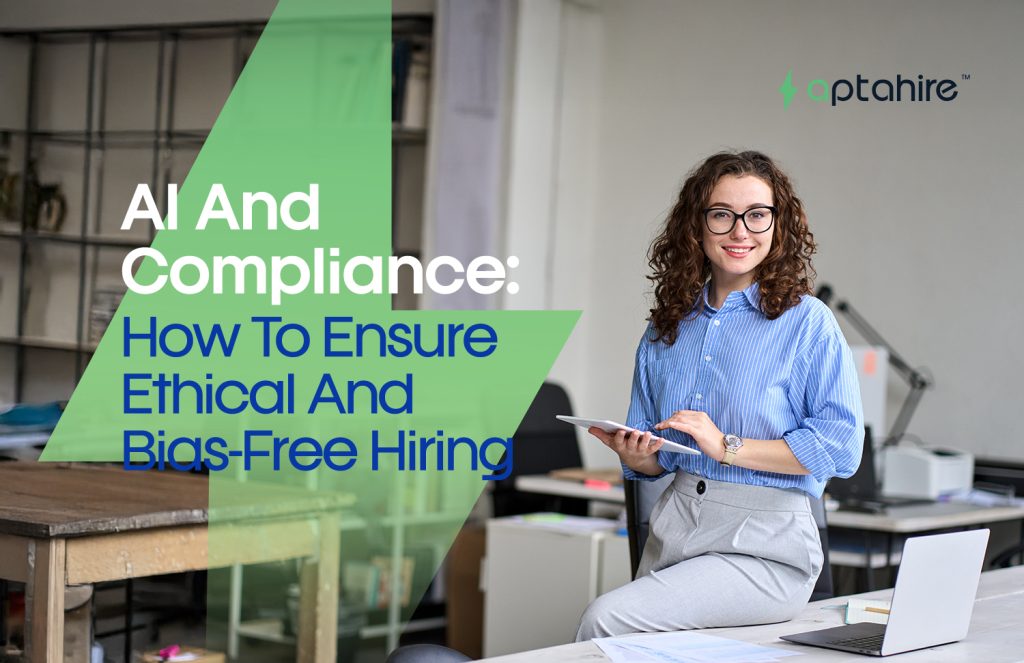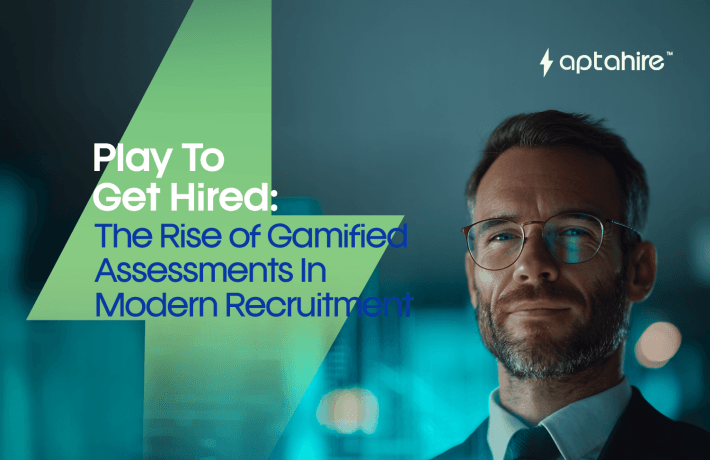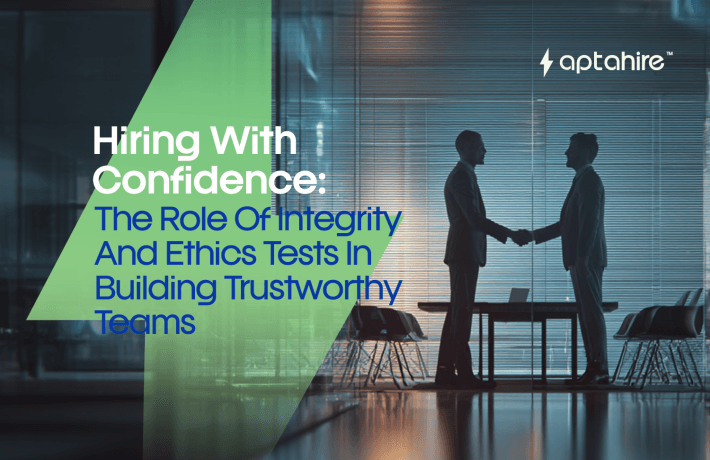AI and Compliance: How to Ensure Ethical and Bias-Free Hiring

Artificial Intelligence (AI) is transforming recruitment. From automating resume screening to conducting video interviews, AI is making hiring faster, smarter, and more efficient.
But here’s the flip side: With great power comes great responsibility.
As more organizations rely on AI-driven hiring tools, there’s an urgent need to ensure that these systems operate ethically, transparently, and in compliance with local and international laws. Because the last thing any company wants is to hire faster, but unfairly.
So, how do we ensure that AI doesn’t just help us hire, but helps us hire the right way?
Let’s dive deep into why AI ethics and compliance matter, the risks of biased algorithms, and most importantly, how to ensure fairness, legality, and inclusivity in AI-powered hiring.
Why Ethics in AI Hiring Matters
Hiring is more than a transaction, it’s about building the future of your company. When AI systems are used to assist or make decisions in recruitment, the consequences of bias or unethical behavior are amplified. A human recruiter might make a flawed judgment call. But an AI system can make that same flawed decision thousands of times, at scale.
Imagine this:
You implement an AI tool to screen resumes. It starts favoring male candidates for engineering roles because the training data mostly includes successful male engineers. Sounds like a nightmare? It’s not hypothetical, Amazon actually scrapped such a tool in 2018.
Bias like this not only damages your diversity goals, it opens your company up to legal risk, reputational damage, and loss of trust.
Common Risks in AI-Based Hiring
Let’s explore the main risks involved in using AI for recruitment:
1. Bias in Training Data
AI learns from historical data. If that data reflects human biases, like preferring candidates from certain schools, locations, or genders, AI will likely replicate (or even worsen) those patterns.
2. Lack of Transparency
Many AI systems work as “black boxes”, they make decisions, but don’t explain how. This lack of explainability makes it hard to audit or question decisions.
3. Unintended Discrimination
Even when demographic data like age, race, or gender isn’t explicitly used, proxies (like ZIP code or name) can indirectly introduce discrimination.
4. Data Privacy Concerns
AI tools often collect and process sensitive information. If not managed carefully, this can breach GDPR, EEOC, or other local data protection laws.
5. Regulatory Non-Compliance
Countries and states are increasingly regulating AI in hiring. For example:
- The EU AI Act regulates the use of high-risk AI systems (including those in hiring).
- New York City’s Local Law 144 mandates bias audits for automated hiring systems.
Ignoring these isn’t just risky, it could become illegal.
7 Steps to Ensure Ethical and Bias-Free AI Hiring
Now that we’ve covered the risks, here’s how to use AI responsibly and ethically in recruitment:
1. Audit the AI Tool for Bias Regularly
Before deploying any AI system, ask the provider about their bias testing protocols. Insist on:
- Regular fairness audits
- Performance across demographic groups
- Transparent documentation
If you’re developing your own tool in-house, collaborate with data scientists and DEI experts to monitor for bias throughout the model lifecycle.
2. Use Diverse and Representative Training Data
Avoid training AI on past hiring data that reflects narrow or biased patterns. The more diverse your dataset, the more fair and inclusive the model’s decisions will be.
Pro tip: Anonymize data and remove biased historical labels during the training process.
3. Stay Compliant with Laws and Guidelines
Different regions have different compliance requirements. Make sure your AI hiring process aligns with:
- EEOC (Equal Employment Opportunity Commission) in the US
- GDPR in the EU
- AI-specific legislation, like NYC’s Local Law 144 or Illinois’ AI Video Interview Act
Consult legal counsel or compliance officers to stay ahead of the curve.
4. Ensure Explainability and Transparency
Candidates (and recruiters) should be able to understand why a particular decision was made. Opt for AI tools that offer:
- Clear scoring mechanisms
- Detailed candidate feedback
- Explainable AI (XAI) capabilities
This improves trust and accountability, both internally and externally.
5. Avoid Over-Reliance on Automation
AI should support decision-making, not completely replace it. Maintain human oversight in final hiring decisions to ensure context, nuance, and empathy are part of the process.
Think of it as a partnership: AI handles the volume, humans handle the judgment.
6. Involve Cross-Functional Teams
Don’t leave AI hiring decisions solely to HR or tech teams. Involve:
- Legal (for compliance)
- Ethics officers
- Diversity & inclusion leaders
- Hiring managers
Together, they can identify blind spots and develop more holistic, bias-aware hiring strategies.
7. Educate and Train Your Hiring Teams
Train your teams to:
- Understand how the AI tool works
- Interpret AI-based assessments fairly
- Recognize potential ethical red flags
This reduces misapplication and improves candidate experience.
Real-World Example: How One Company Got It Right
Let’s take an example. A global FinTech firm implemented an AI video interview tool. After initial deployment, they noticed it was favoring candidates with North American accents.
Instead of brushing it off, they took action:
- Partnered with external auditors
- Recalibrated the model with a more global dataset
- Introduced human oversight for edge-case decisions
Result? A more inclusive hiring pipeline and a stronger employer brand.
Bonus: How AI Can Help Reduce Bias (When Done Right)
It’s not all doom and gloom. When built ethically, AI can actually help overcome human bias by:
- Removing demographic indicators from resumes
- Using objective, skill-based scoring systems
- Encouraging data-driven decision-making over “gut feeling”
- Scaling unbiased practices consistently across departments
So yes, AI can be part of the solution, it just needs guardrails.
Final Thoughts: Hire Smarter, But Also Fairer
The future of recruitment is undeniably AI-driven. But speed and efficiency should never come at the cost of ethics, fairness, or human dignity.
Building an ethical, bias-free AI hiring process isn’t just good compliance, it’s smart business. It builds trust with candidates, strengthens your employer brand, and helps you build diverse, high-performing teams.
So, as you embrace AI for hiring, don’t forget to ask:
“Is this helping us hire faster and fairer?”
That’s the real ROI of ethical AI.
FAQs
1. How can AI introduce bias into the hiring process?
AI can become biased if it is trained on historical hiring data that reflects human prejudices, such as gender, race, or educational background. This leads the AI to replicate those biases in future hiring decisions, even if demographic data is not explicitly used.
2. What are some regulations companies must follow when using AI in hiring?
Key regulations include:
- EEOC (Equal Employment Opportunity Commission) guidelines in the U.S.
- GDPR in the European Union, ensuring data privacy and transparency
- NYC Local Law 144, requiring AI hiring tools to undergo annual bias audits
- Illinois’ AI Video Interview Act, mandating candidate consent and transparency
Companies must stay updated on both local and international compliance laws to avoid legal risks.
3. How can we ensure our AI hiring tool is ethical?
Start by choosing vendors who conduct regular bias audits, offer explainable AI, and use diverse training data. Internally, implement human oversight, involve cross-functional teams, and educate hiring managers on how to use the tool responsibly.
4. Can AI actually reduce bias in recruitment?
Yes, when used correctly. AI can eliminate subjective judgments by focusing on skill-based, data-driven insights. For example, it can remove demographic information from resumes or use structured interview scoring, reducing unconscious bias in early stages of recruitment.
5. What does “explainable AI” mean in hiring tools?
Explainable AI refers to an AI system’s ability to clearly articulate why it made a decision, such as why a candidate was shortlisted or rejected. This builds trust and allows hiring teams to audit and correct any unintended patterns.
6. How often should we audit our AI recruitment system?
Bias and fairness audits should be conducted at least once a year, or whenever major changes are made to the model or hiring criteria. Regular audits ensure the system remains fair, compliant, and aligned with diversity goals.
7. What role does human oversight play in AI hiring?
AI is best used to assist, not replace, human decision-makers. Recruiters and hiring managers should always review AI recommendations, add context, and ensure that final decisions are made with empathy, judgment, and awareness of potential edge cases.



